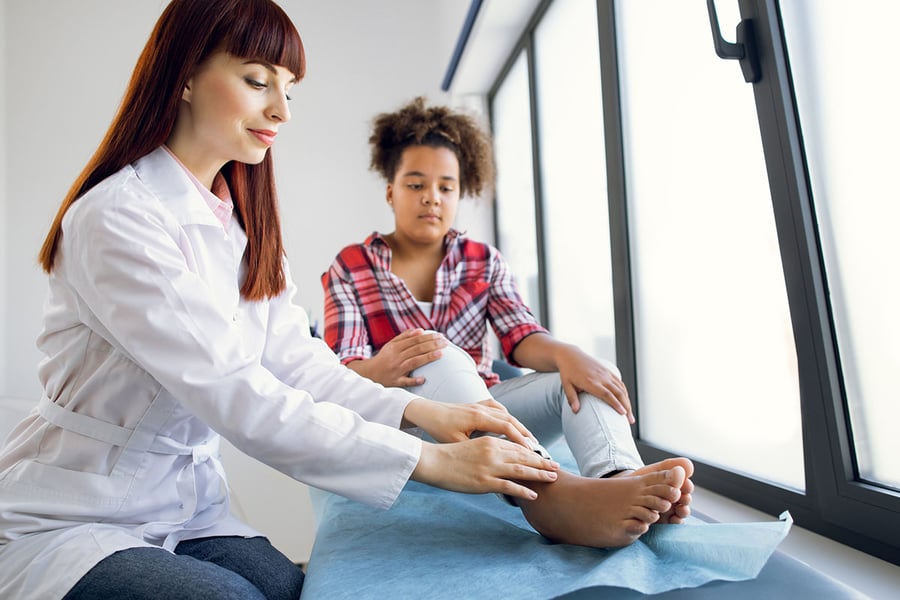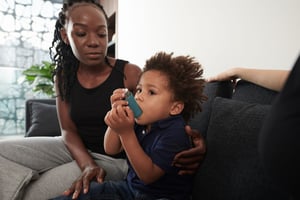Improving Pediatric Emergency Care in Wisconsin
October 20, 2022 Posted by Jesse M. Ehrenfeld, MD, MPH

Making sure that every child in Wisconsin has access to high-quality emergency care seems like a no-brainer.
But unfortunately, when it comes to providing emergency care to children, not all emergency departments are created equal.
That’s why an innovative partnership is working to ensure that staff at Wisconsin’s hospitals are equipped and prepared to provide emergency care to all children, no matter what their race, socioeconomic status, or zip code.
Emergency Care in Wisconsin
Our state has 129 emergency departments that care for people of all ages. If you are a parent with an injured or sick child, you’ll generally look for the closest emergency room. But not every emergency department is prepared to meet the needs of children.
That’s where this community-academic partnership is stepping in to assist.
How Ready Are Wisconsin’s Emergency Departments?
When it comes to being ready for kids, our state’s emergency departments can do better.
The National Pediatric Readiness Assessment showed that Wisconsin’s Pediatric Readiness score is 66.25 out of 100. Some Wisconsin emergency departments scored as low as 30.
Clearly, there’s room for improvement. That’s why the Advancing A Healthier Wisconsin Endowment is investing in a project called Pediatric Wellness for Community Emergency Departments.
A 2021 AHW grant was awarded to an innovative partnership between the community organization Children’s Health Alliance of Wisconsin and an academic partner, Dr. Lorin Browne, DO. Dr. Browne is an associate professor at Medical College of Wisconsin who has a wealth of knowledge about issues faced by children and parents in emergencies.
What is this partnership doing to improve pediatric emergency care?
Getting Hospitals Ready
All emergency responders and hospitals need to be ready to provide the highest quality emergency care, no matter where they are — and who they serve.
The Children’s Health Alliance of Wisconsin is working with a national program called Emergency Medical Service for Children (EMSC), which aims to improve the quality of pediatric care in our state. The organization provides training, resources, and support to Wisconsin’s emergency departments and emergency medical service agencies.
The project is working to collaborate and partner with agencies, systems, and organizations that are connected to emergency services to address gaps and inequities in care.
The following are some concrete actions the project has taken to get all stakeholders involved in improving emergency care for kids.
-
Pediatric Comfort Kit. The project distributes a kit that includes items that help soothe and distract kids during an emergency. Response teams and emergency departments can use the kits to help young people feel less fear.
-
Pediatric Pre-Hospital Reference Guide. This reference guide provides a brief explanation of specialized assessment, equipment, and medication for kids.
-
Ten Ways Kids are Different from Adults. This infographic shows the physiological and anatomical differences between kids and adults. It covers issues like respiration, heart rate, heat loss, tiny veins, thinner skin, and immature bones. Knowing these things can help first responders and emergency departments do a better job helping kids at risk.
These are steps in the right direction, and the organization continues to seek ways to improve emergency care.
What’s Next?
The partners in Pediatric Wellness for Community Emergency Departments are working to develop, test, and refine a Pediatric Readiness Implementation Guide based on the National Pediatric Readiness Assessment. The goal is to prepare and support every community’s emergency department to provide high-quality, evidence-based emergency care.
The work is underway. A stakeholder group has been formed, and it includes some of Wisconsin’s pediatric experts such as representatives from the Wisconsin chapters of the American Academy of Pediatrics and the American College of Emergency Physicians, Wisconsin Collaborative for Healthcare Quality, Wisconsin Emergency Nurses Association, Wisconsin Emergency Preparedness Program, and Wisconsin Rural Health Cooperative. The idea is to use this all-star team to develop a guide that is specific to Wisconsin to improve our readiness scores.
A Shared Understanding
Projects like this one help advance Wisconsin’s health equity by ensuring that every emergency department and EMS staff person understands the special needs of children.
With the right training, resources, and guidance, emergency staff can help children feel less scared and get the treatment they need in a timely manner.
When we are able to measure and improve the performance of these critical institutions, our children — no matter what their circumstances — will be better served when they experience traumatic emergencies.




